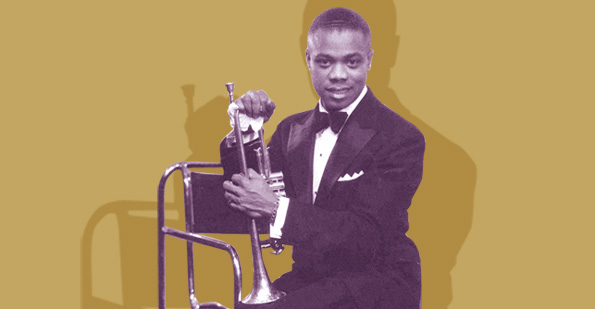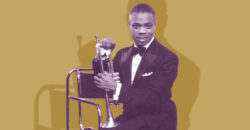Magazine
Satchmo and the Jewish Family
Louis Armstrong never forgot the employers who nurtured him as a boy
Published: December 16, 2014
Last Updated: May 23, 2019

How Louis encountered “the Jewish Family” (as he referred to them in writing) should come as no surprise to anyone familiar with the “crazy quilt” character of some New Orleans neighborhoods, in which people of diverse racial and ethnic backgrounds commingle on a daily basis, often living next door to each other. Such was the case when Louis moved from Jane Alley, “back o’ town,” to Franklin and Perdido Streets, in the Third Ward. South Rampart Street was only a couple of blocks away, teeming with pawnshops, tailoring establishments, restaurants, bars, and saloons. The resident proprietors of the pawnshops, and many of the tailors, were Jewish — the Finks, Fertels, and Karnofskys being the most prominent among them — but the neighborhood also included a Chinatown.
Running amok on the streets as he was wont to do, little Louis took it all in, and his relationship with the Karnofskys (which began with his first job) was pretty much a foregone conclusion from the time he moved into the neighborhood. Among other things, they shared a similar lifestyle, right down to the basics: for example, everybody in the neighborhood had to use privies (yes, outhouses); everyone was poor in material goods but rich in spirit, and their fortune was in the streets; and if you were eating out for a special occasion, you went to a Chinese restaurant, where they had soul food (“lead beans and lice” said Louis) along with the usual Cantonese fare. What Armstrong admired about his Jewish benefactors was that they were industrious and stood together in the face of oppression — which was something they encountered at every turn, like their black neighbors. They were “all in this together,” but some folks were more together than others. As Louis said later, “I came up the hard way, the same as lots of people, but I always help the other fellow if there’s anyways possible.” After he made it, he kept a bankroll that could choke a gator, precisely to make good on that promise. He learned that from the Karnofskys.
Louis really did start at the bottom. His job for the Jewish family was collecting refuse (bottles and rags mostly) and delivering coal to the prostitutes in Storyville. He usually accompanied Morris or Alex, two of the Karnofsky sons, on the junk wagon and played a tinhorn to attract customers. One day they passed a pawnshop and Louis saw a burnished B-flat cornet on sale for five dollars in the window. Five bucks might as well have been a million, but Morris advanced him two dollars and he saved the rest at 50 cents a week until he could raise the money to buy the horn. (That’s something else they taught him, how to save, which as most of us know, is a hard lesson, often learned more than once in a lifetime.) Morris never let Louis forget that he had talent and applauded him as he attempted to make his first horn sing.
“They could see I had something in my soul,” Louis said. And the Karnofskys also made sure that he had something in his stomach. Louis loved the food he ate at their home. As he put it: “My first Jewish meal was at the age of seven. I liked their Jewish food very much. Every time we would come in late on the little wagon from buying old rags and bones, when they would be having supper they would fix a plate of food for me, saying ‘you’ve worked, might as well eat here with us. It is too late, and by the time you get home, it will be way too late for your supper.’ I was glad because I fell in love with their food from those days until now. I still eat their food — matzos. My wife Lucille keeps them in her breadbox so I can nibble on them any time that I want to eat late at night. So tasty — DEElicious.”
Louis worked for the Karnofskys until he was about twelve, by which time he was “a little large for the job.” We all know what happened to him after that — he became the first super star of jazz — but what about his mentors? As Louis tells it “they came into larger businesses. They had invested their saved earnings, and before one realized it, they had New Orleans all sewed up.”
Well, in point of fact, the youngest son, David, grew up to be a master tailor, and he kept in touch with his family’s most famous protégé, often attending Louis’s performances in New York. And there’s more. Later generations of Karnofskys abbreviated the surname to Karno (which it may have originally been in their native Russia), and some of them became powerful nightclub owners in the French Quarter. Nick Karno had La Strada, The 500 Club, The Famous Door, Court of Two Sisters, and other prime real estate devoted to music. So maybe this relationship was more reciprocal than it’s usually made out to be, because it seems to me that Louis gave the Karnofskys something, too — an appreciation for the creative power of jazz. That’s a gift that keeps on giving.
———-
Bruce Boyd Raeburn, Ph.D., is director of the Hogan Jazz Archive at Tulane University.
